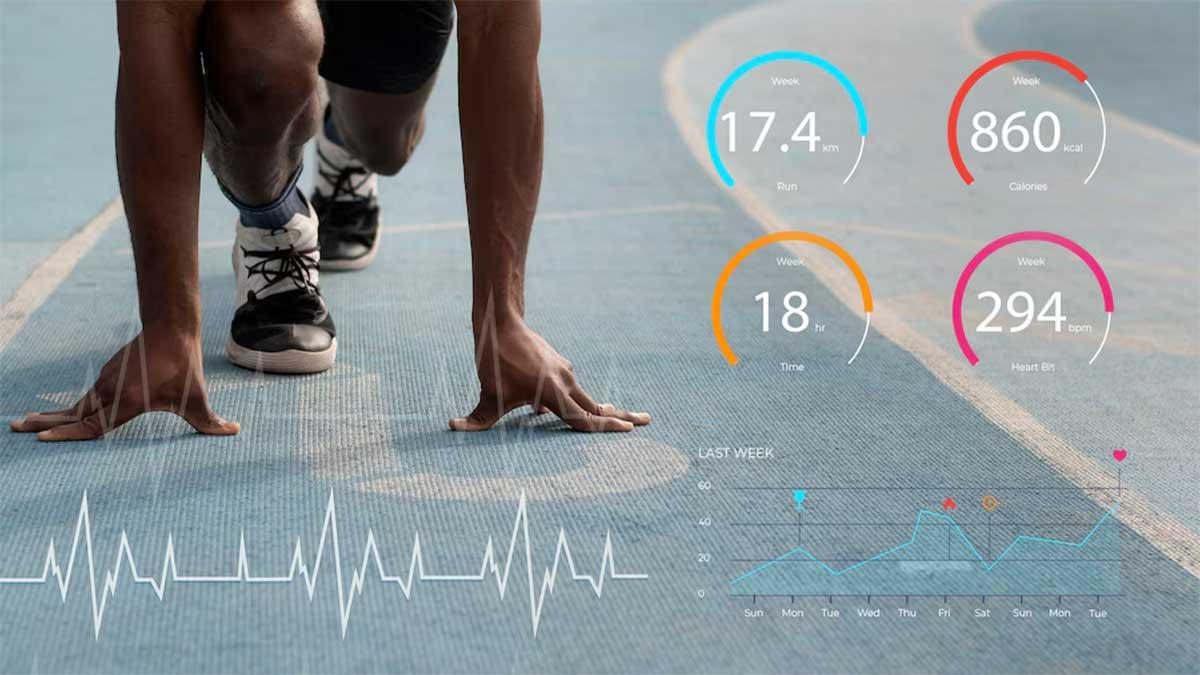Nowadays, athletes are like elements of a sophisticated mechanical system, and time control guarantees they will be optimal. Using modern sensors and high levels of analytics, teams can monitor every beat, movement, or recovery detail. It is not about enhancing the players' performance but transforming how preparation, competition, and restitution are done. It's the reason for modern sports success.
Wearable Technology for Continuous Monitoring
Smartwatches have made sports a technologically driven sector. Smart bands and biometric vests monitor other essential health metrics such as pulse rate, oxygen saturation, and temperature. Like a reliable betting app, these tools provide real-time insights to enhance decision-making. These gadgets do not stop—they give coaches and medical crews a window into an athlete's preparedness.
As we noted with wearables, guessing whether a person is tired or stressed is a thing of the past. Equipment such as the GPS vest shows how the player behaves during moments of stress on the playing field. They help to develop individual programs that will exactly suit the athlete. It was not imaginable even a decade ago, but such accuracy is considered best practice today.
Injury Prevention Through Advanced Data Analytics
Technology has long changed the way injuries are prevented. Real-time data helps to focus public attention on stress before it becomes an issue. These are some of the ideas that coaches and analysts apply to safeguard players' careers.
Key tools include:
- Motion sensors: Be aware of the pressure on both joints when the body participates in aggressive exercises.
- Pressure plates: Force distribution should be analyzed to prevent overloading some forces while overemphasizing others.
- AI algorithms: Estimate future accidents based on records.
Athletes can respond to such signals early, so they don't have to miss games or competitions during the season. Real-time analytics are not just applications—they are enablers.
Tracking Performance Metrics in Team Sports
In team sports, performance measurement is not confined to tracking one's scores. It's about the pursuit of synergies through technology. Much like the analytics shared on Melbet FB, automated player tracking presents sophisticated details about players' physical and tactical movements. Today, trainers have begun using a more significant number of facts to achieve the goals by applying the scientific approach with ethics to build teams.
GPS Trackers in Team Dynamics
GPS trackers are among today's machines used in team sports performance analysis, especially during competition. They record every motion on the field, including sprints and changes to positions. This enables coaches to determine the distance traveled, acceleration bursts, and velocity fluctuations of the players. The data presents what certain players do and how they help others on the team in real-time.
With this information, every tactical decision is more straightforward. For instance, the shifted defensive line movements increase the team's cohesiveness. It's not about pixels; it's about patterns, behavior, and how people turn, and then the pressure is on. GPS systems turn raw data into a strategy and align the whole team to it.
Hydration and Nutrition Monitoring
Hydration and nutritional science have advanced digitization, and now mobile sensors can detect sweat composition and hydration levels in real-time. Such systems help players ensure they have an optimum balance of water and electrolytes, especially during games. Dehydration and nutrient loss directly affect endurance; however, today's technology does not allow for a water or nutrient drop to happen.
Nutritionists then use the data from these sensors to develop the most suitable recovery plans. They decide in great detail exactly what each player requires, whether fluid replacement or meals that are needed after a match, with the right proportion of proteins and carbohydrates. The result? Athletes stay fit to perform effectively and give a set performance from game to game.

Mental Health Monitoring in Athletes
Being an athlete comes with immense mental pressure, ranging from pressure to deliver sales to being in the eye of the public. Stress meters and sleep monitors are no longer a thing of the future; they are here, and so is monitoring of brainwave frequencies. EEG headsets and heart rate variability trackers identify potential cases of anxiety or tiredness before getting worse. It is possible to master the knowledge of helping people to recover mentally as efficiently as they develop muscles.
To this end, this data is combined with relevant relaxation strategies that will help the teams ensure that the players remain focused during such times. Sleep tracking devices assist people in getting the best rest so that the brain works in perfect conditions. Psychological state is no longer a secret in athletics; it is addressed and controlled in the same way that fitness is controlled.
Future Innovations in Sports Monitoring
In this respect, sports science is poised for unprecedented development and change. Internal sensors in implantable data loggers are being conceptualized to capture internal data such as a person's blood oxygen level. Nanotechnology envisages wearables no bigger than cells that monitor health at the same level. This is because, through better inventions like artificial intelligence in predictive modeling, athletes cannot only deal with a problem but avoid it altogether. The future for sports is brighter, faster, and sharper.


















